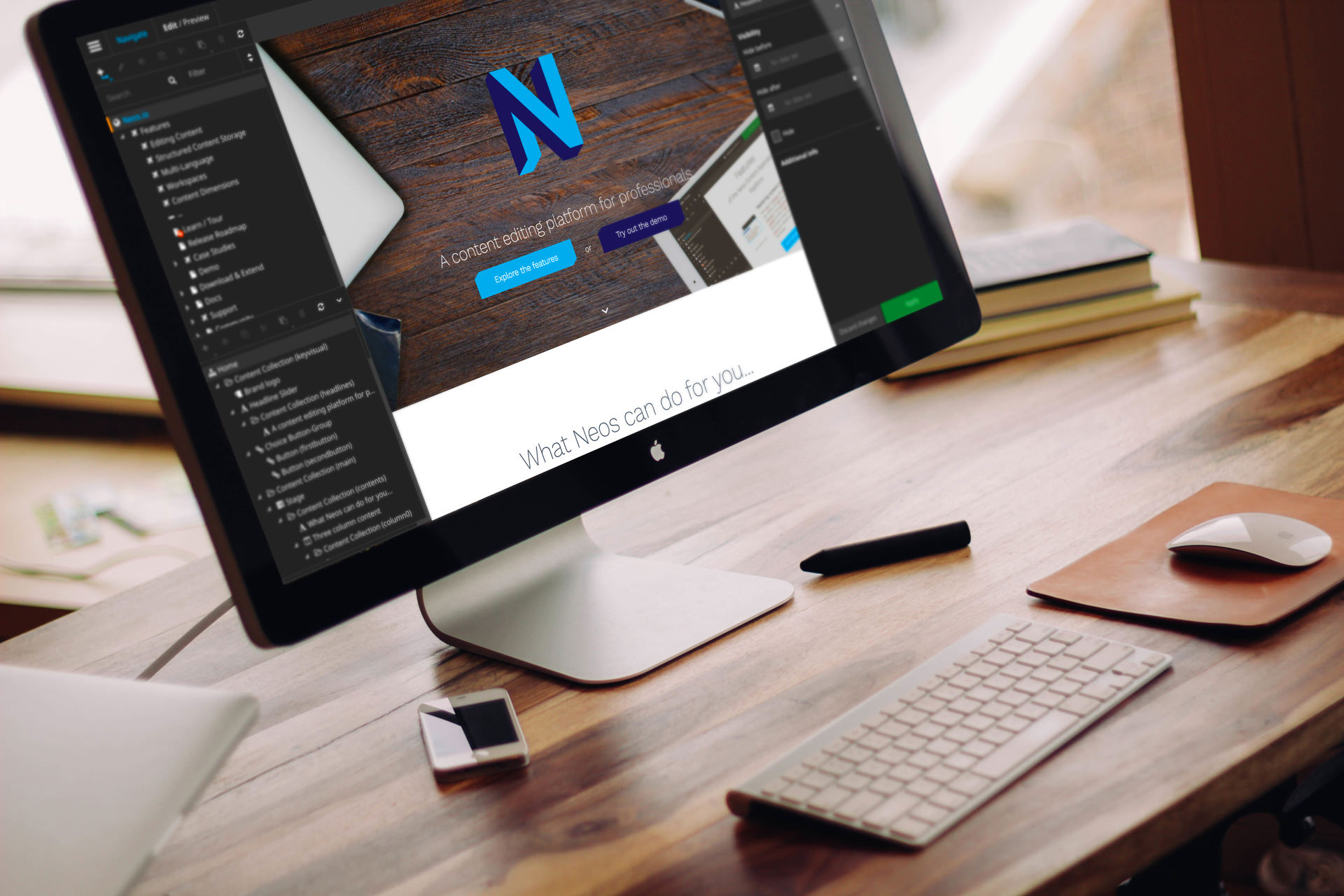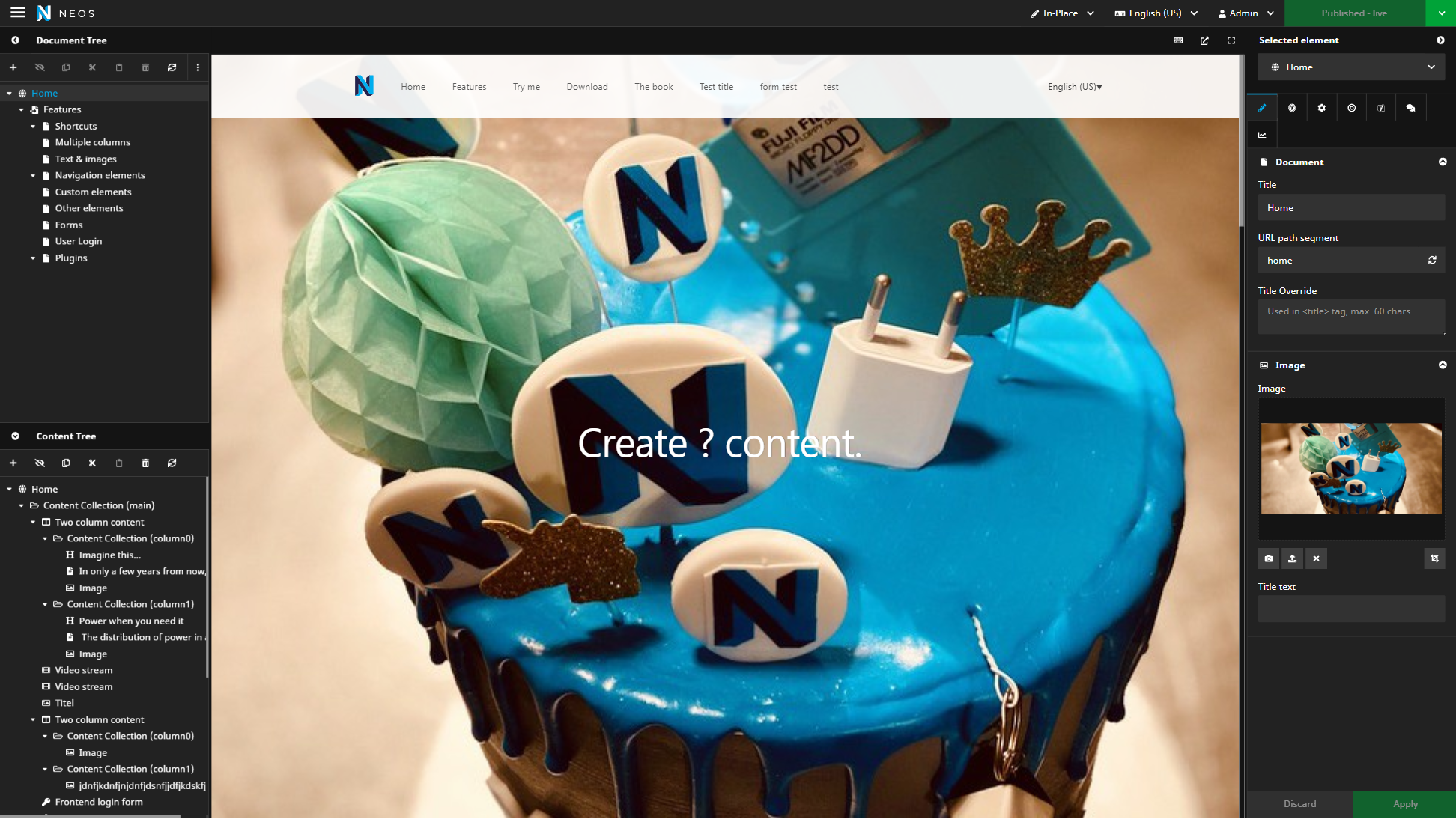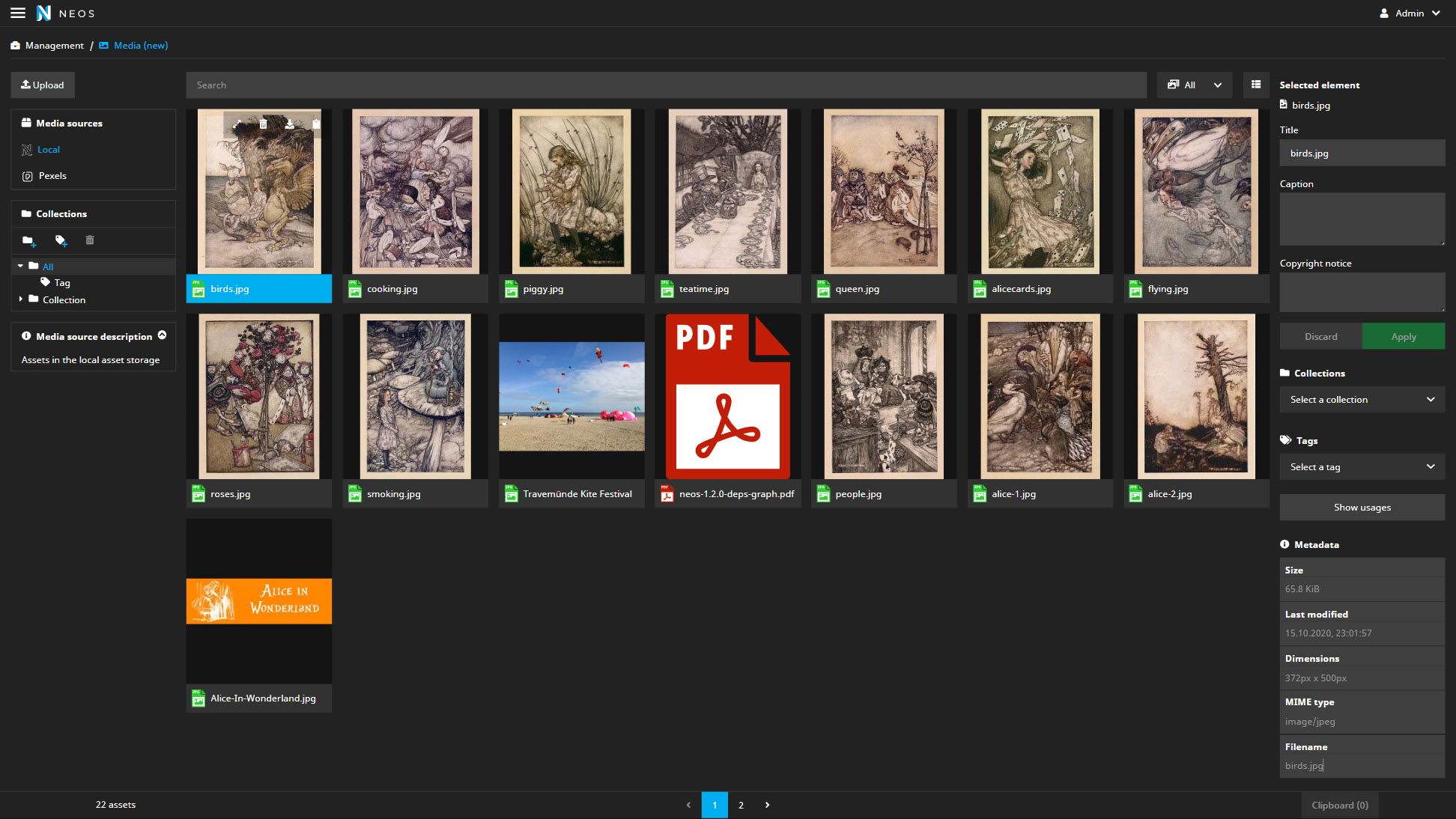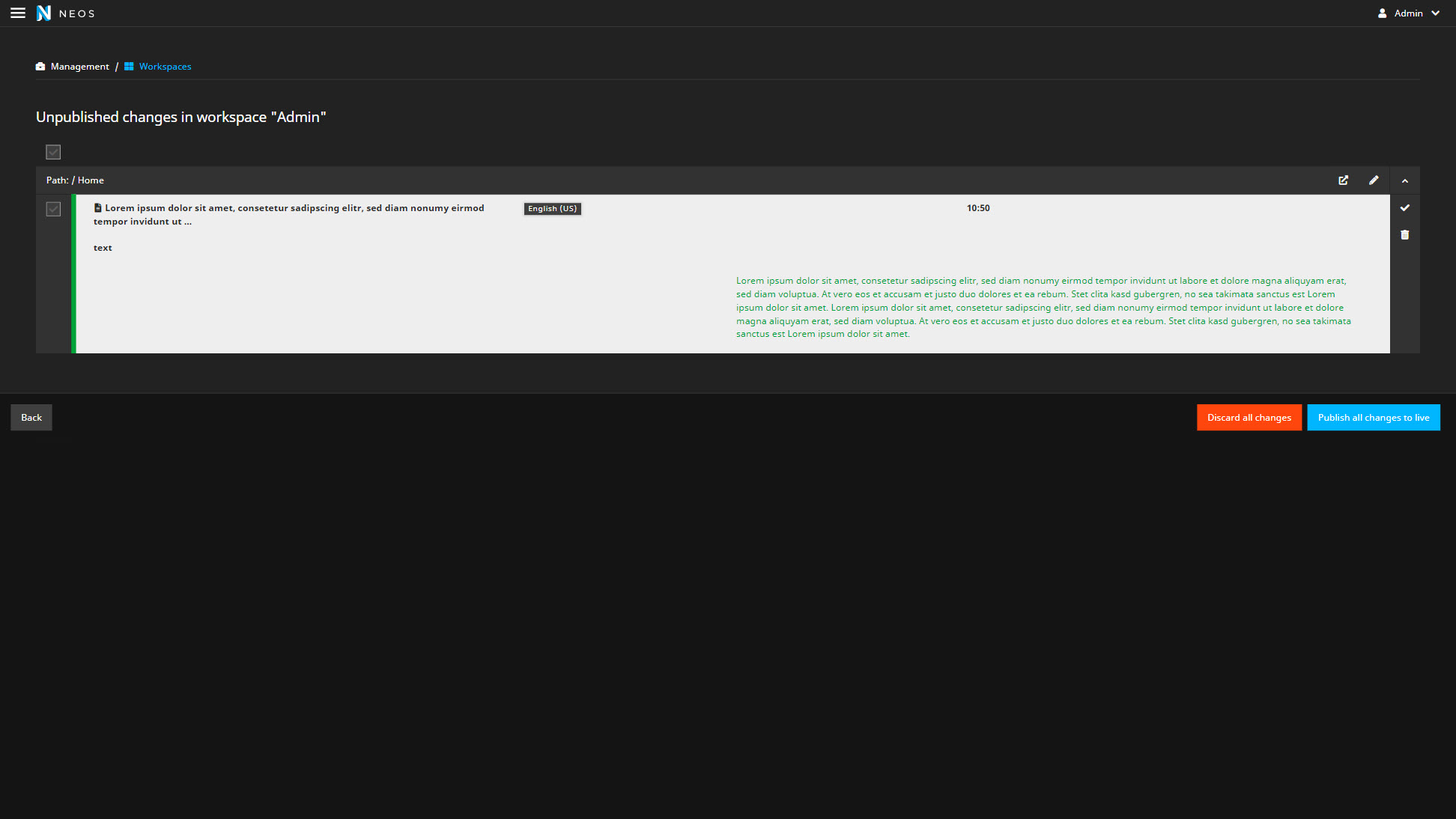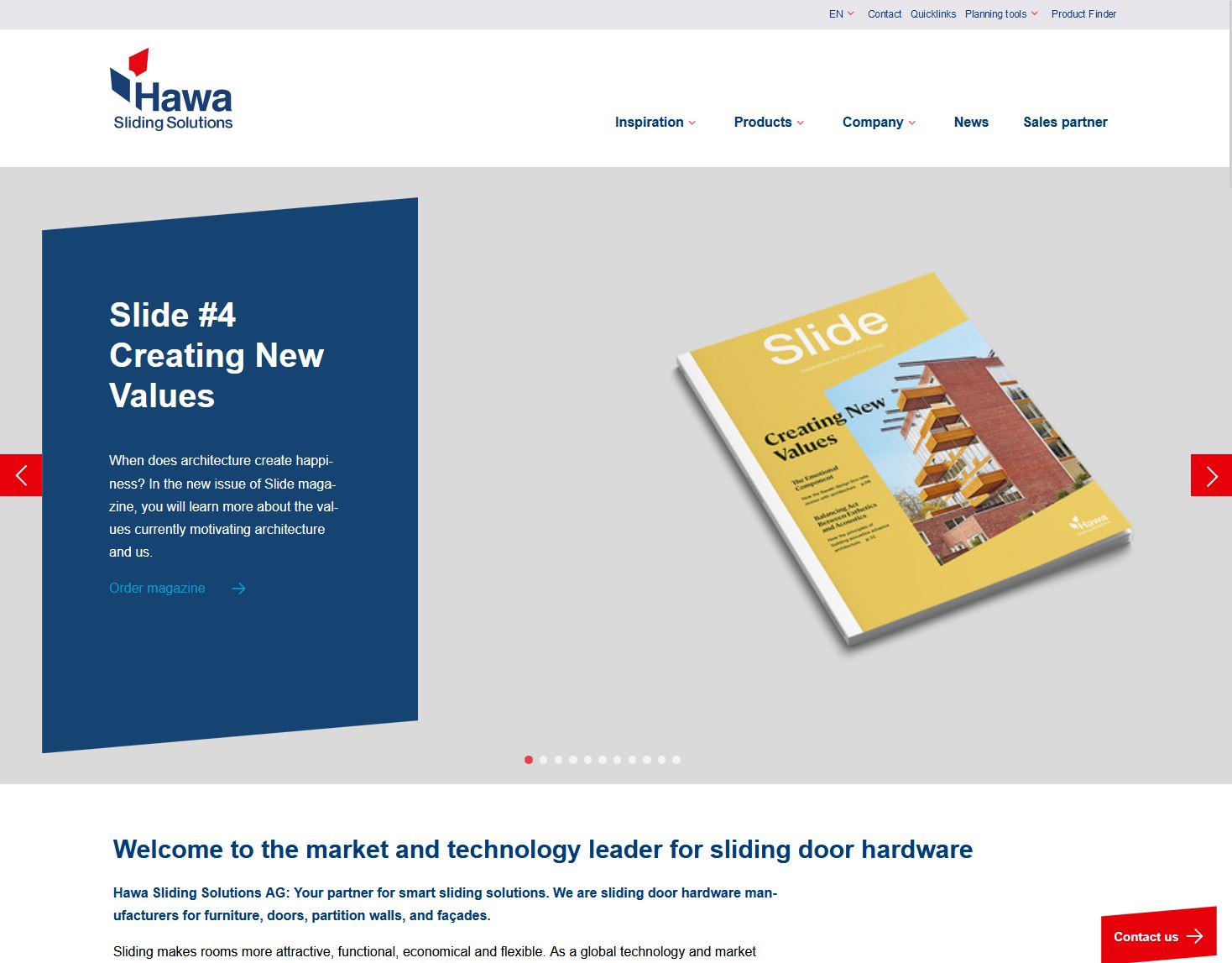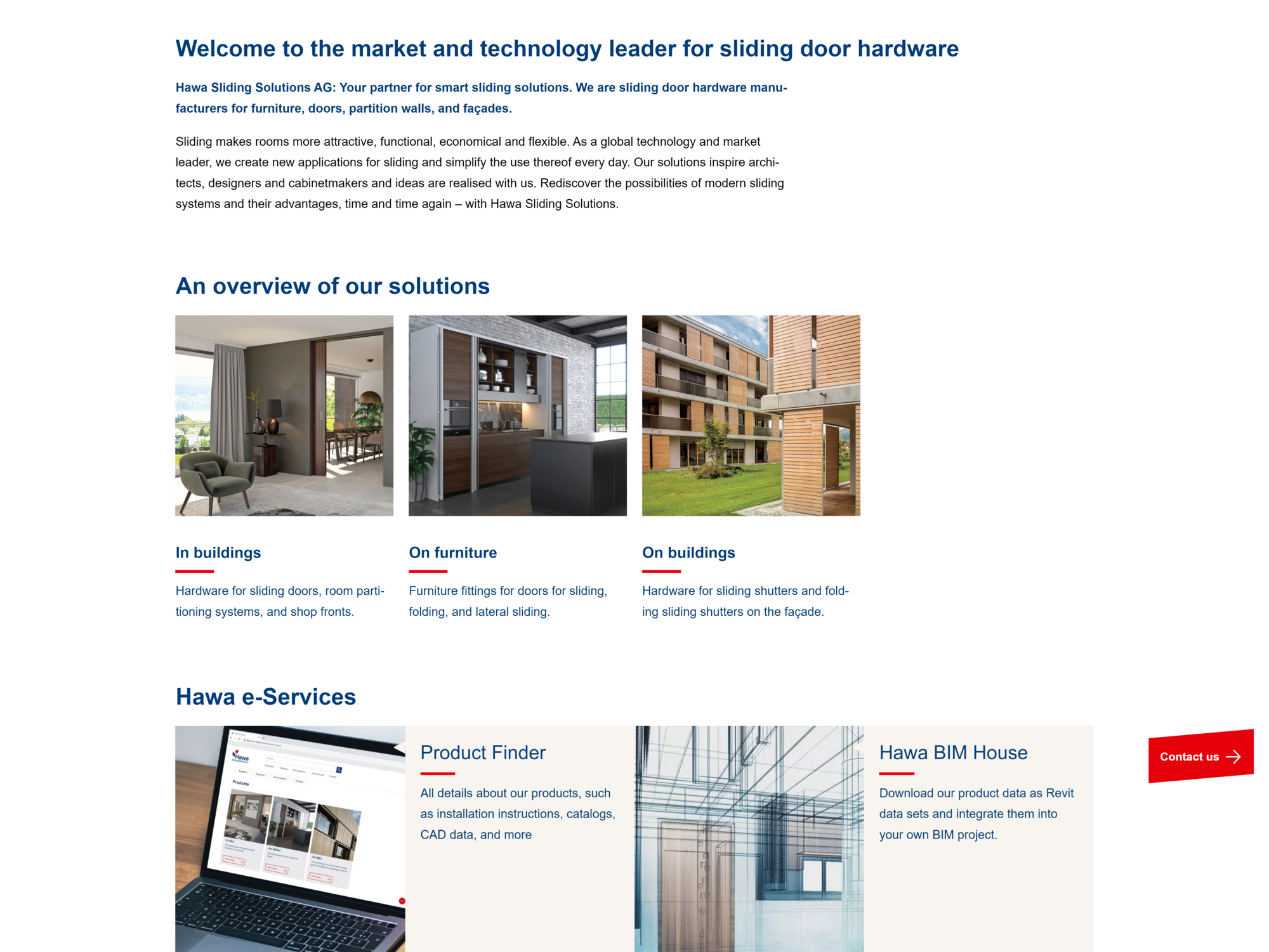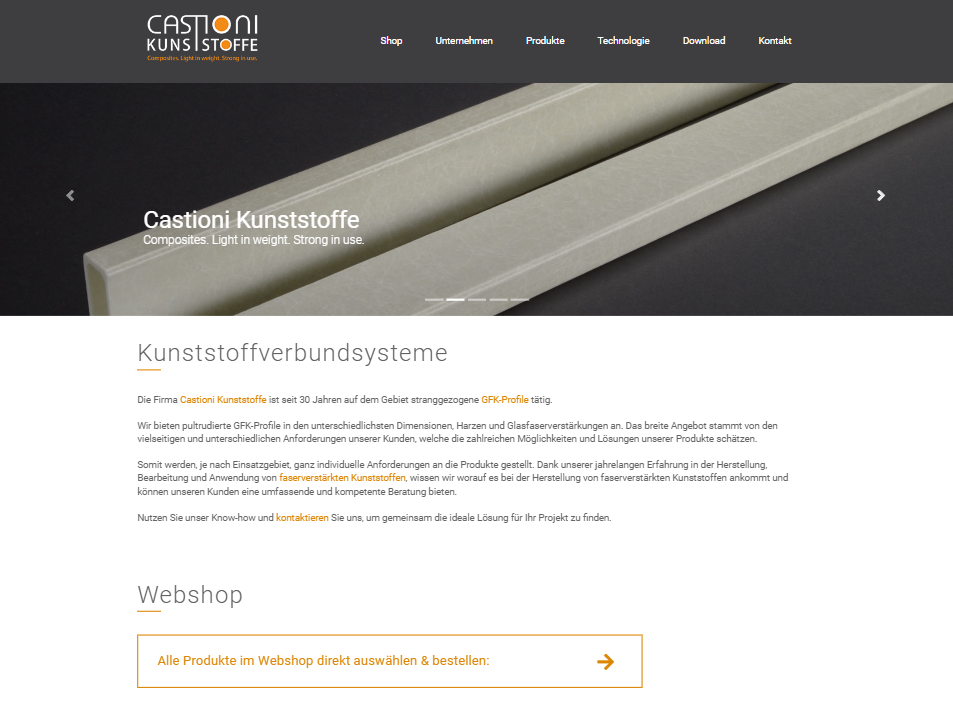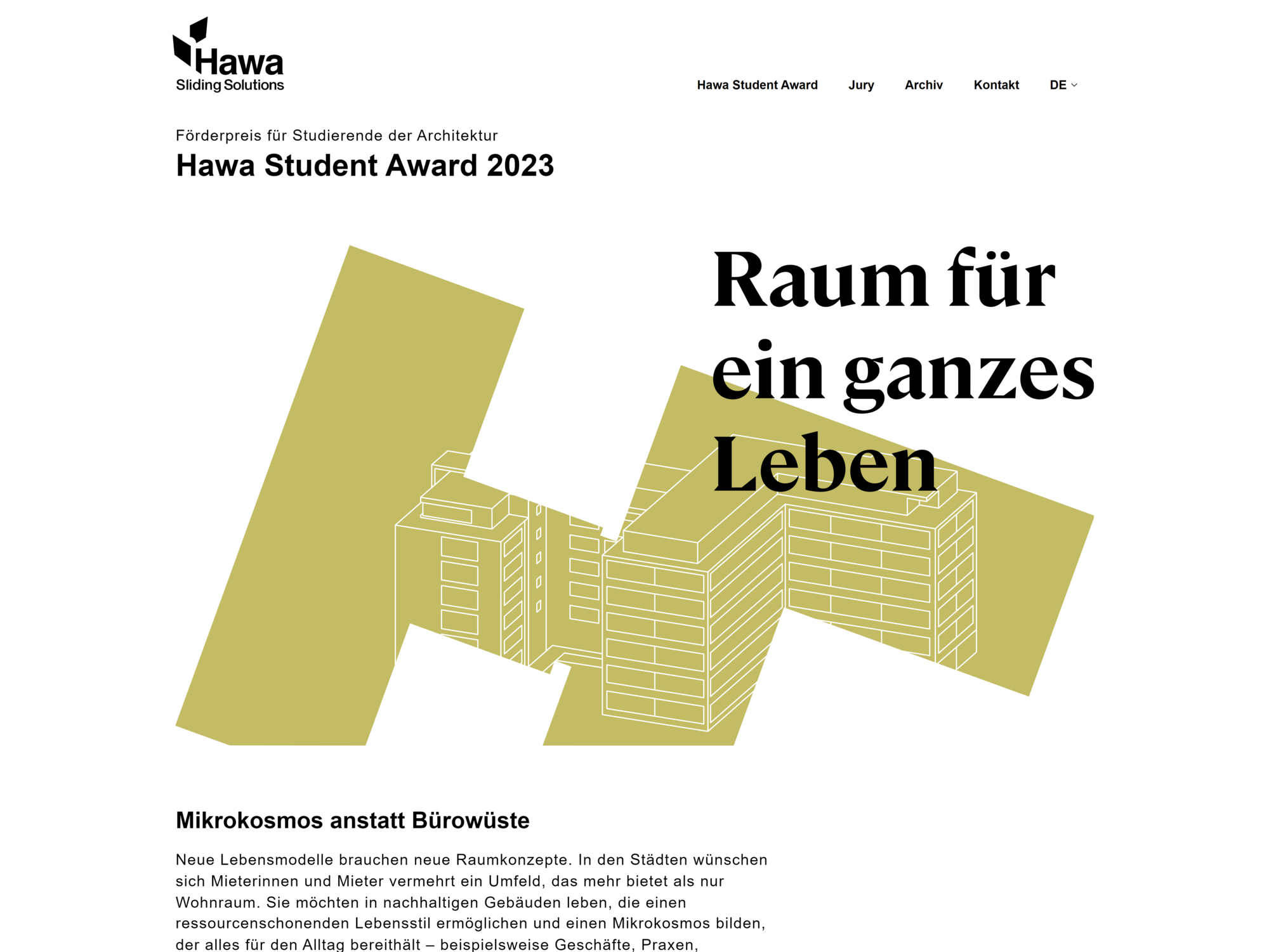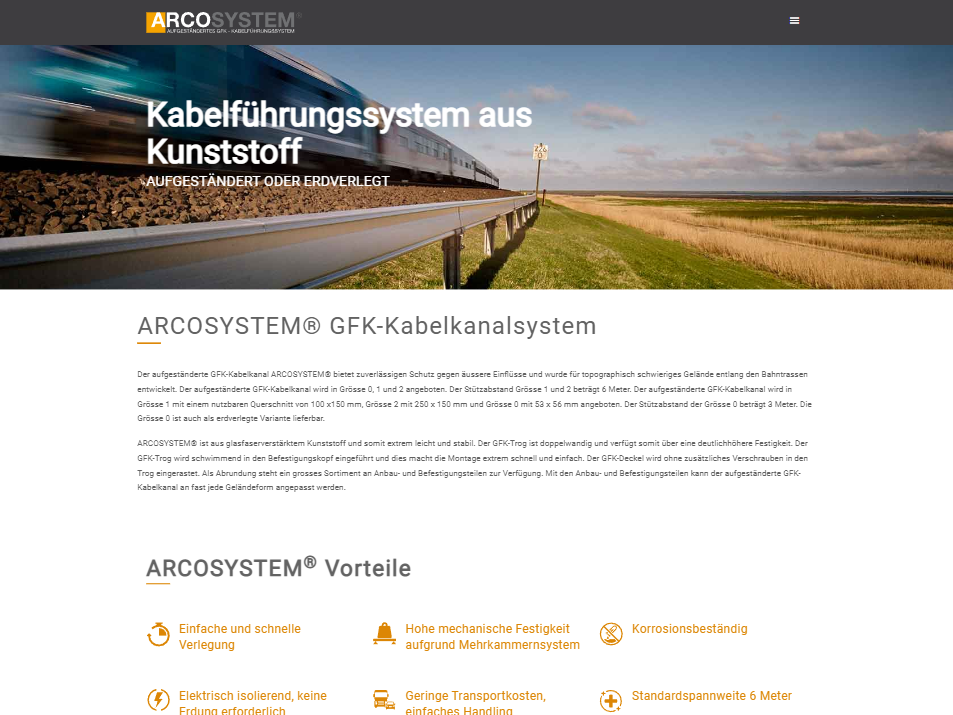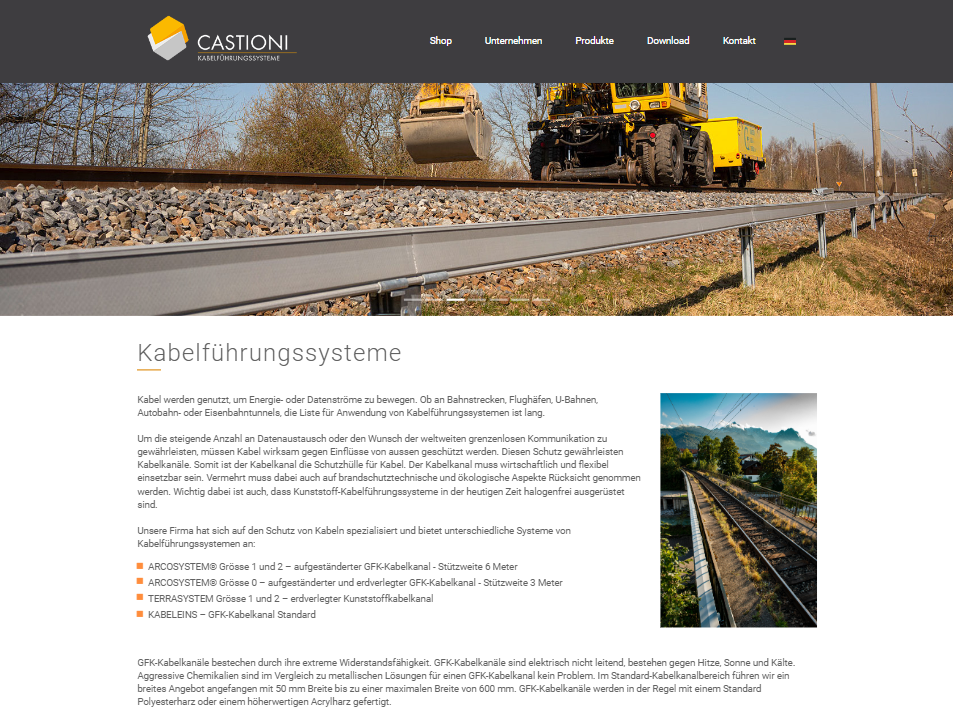Neos - Le système de gestion de contenu simple et intuitif
Neos est un système de gestion de contenu qui convainc par son utilisation simple et intuitive. Nous utilisons nous-mêmes le système de rédaction de NEOS et sommes très expérimentés et satisfaits de son utilisation - vos collaborateurs le seront bientôt aussi !
Nous développons depuis plus de 20 ans des solutions web basées sur Typo3 et connaissons toutes les facettes de ce CMS. Ces derniers temps, le système de gestion de contenu Neos, issu de la communauté Typo3, s'est révélé idéal pour de nombreuses exigences. Sa structure est beaucoup plus conviviale et intuitive. Il en résulte moins de frais d'assistance. Neos offre une structuration flexible des contenus et est optimisé de manière optimale pour les contenus spécifiques aux groupes cibles et aux régions (langue, pays, groupe cible). Des outils de référencement sont inclus de manière standard, tout comme des environnements de prévisualisation personnels et spécifiques à un groupe.
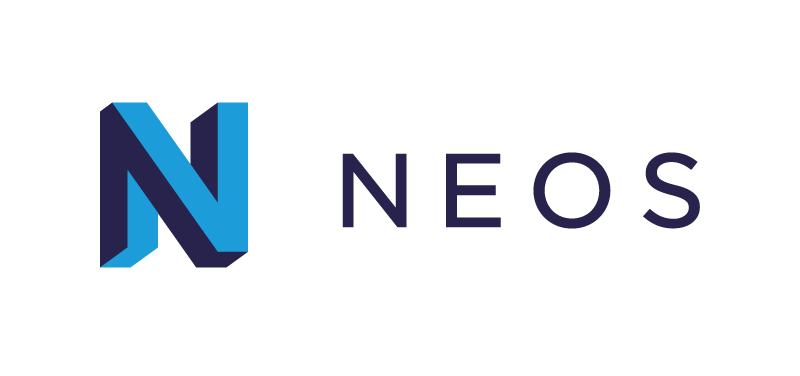
Pourquoi Neos CMS
Les contenus, les textes et les photos sont très faciles à créer avec NEOS, car ils sont en grande partie auto-explicatifs. Ceux qui savent utiliser MS Office s'en sortent également très bien avec ce CMS. L'arborescence intuitive qui se trouve derrière le site web et chaque page individuelle simplifie énormément le travail.
Neos CMS souhaite offrir à ses utilisateurs une création, une édition et une modification simples des contenus web. Cela se fait notamment par glisser-déposer. En outre, le système a été conçu par des développeurs pour des développeurs. Cela se traduit entre autres par les possibilités de modélisation de contenus personnalisés, par l'extensibilité prévue et par l'intégration simple de systèmes tiers.
1. Véritable Wysiwyg
Avec le Véritable WYSIWYG, vous pouvez apporter des modifications à votre contenu en temps réel et voir à quoi elles ressembleraient sur votre site web avant même de les publier.
2. Le multilinguisme dans Neos
Créez un emplacement central pour tous vos contenus dans différentes langues afin de garantir une communication cohérente et conséquente.
3. Kubernetes Docker
Avec son architecture centrée sur le cloud, Neos CMS est prêt à relever les défis du paysage actuel du cloud computing.
4. Optimisation pour les moteurs de recherche
Neos CMS est optimisé dès le départ pour le référencement afin de garantir que vos contenus soient trouvés par les moteurs de recherche.
5. Processus de travail Espaces de travail et processus de validation
Neos CMS met à disposition une interface utilisateur intuitive qui permet aux rédacteurs de travailler efficacement et de produire un contenu de haute qualité.
6. Personnalisation, groupes cibles, dimensions et tests A/B
Neos CMS vous permet de créer et de gérer des campagnes de marketing complexes afin d'atteindre et d'engager efficacement votre groupe cible.
7. Commerce de contenu
Neos CMS offre une intégration transparente des boutiques en ligne afin de vous proposer un système de commerce électronique cohérent et efficace.
8. Serveur de tuiles Openstreetmap
Openstreetmap permet de visualiser des données ou des informations complexes d'une manière facilement compréhensible pour l'utilisateur.
9. Tableaux comparatifs des produits
Les tableaux de comparaison de produits dans Neos CMS vous permettent d'améliorer l'expérience utilisateur en offrant à vos clients un moyen intuitif et interactif de comparer les produits.
10. Microsoft Dynamics 365 CRM
Grâce à l'intégration API de Microsoft Dynamics CRM dans Neos CMS, toutes les données pertinentes peuvent être synchronisées de manière centralisée. Cela garantit que vos données clients sont cohérentes et à jour dans les deux systèmes.
11. Magento Webshop API
Intégrez Magento de manière transparente dans votre environnement CMS Neos et créez un écosystème e-commerce unifié et performant. Grâce à l'intégration de l'API Magento Webshop, vous ferez l'expérience de transactions fluides, d'une expérience utilisateur améliorée et d'une efficacité accrue. Découvrez la nouvelle ère du e-commerce avec Neos CMS et Magento.
12. Vuejs Frontend
Intégrez Magento de manière transparente dans votre environnement CMS Neos et créez un écosystème e-commerce unifié et performant. Grâce à l'intégration de l'API Magento Webshop, vous ferez l'expérience de transactions fluides, d'une expérience utilisateur améliorée et d'une efficacité accrue. Découvrez la nouvelle ère du e-commerce avec Neos CMS et Magento.
13. Livesearch - Elasticsearch
Utilisez la puissance d'Elasticsearch dans votre CMS Neos pour améliorer vos fonctions de recherche, obtenir des informations précieuses à partir de vos données et faire progresser votre entreprise.
14. PIM - Trouveur de produits
Profitez de la puissance d'un système PIM efficace dans Neos CMS. Optimisez les informations sur vos produits, améliorez la recherche et garantissez des données cohérentes et actuelles sur toutes les plateformes.
15. Fichier BIM
Découvrez la puissance de l'intégration de BIM et de Neos CMS - un game changer pour le secteur de la construction et de l'ingénierie, qui établit de nouveaux standards en termes d'efficacité, de transparence et d'engagement client.
16. Carte des points chauds
Découvrez la puissance de l'interactivité avec les cartes de points chauds dans Neos CMS. Augmentez l'engagement et améliorez l'expérience utilisateur grâce à des contenus interactifs captivants.
17. Partenaires de vente
Gardez une vue d'ensemble de toutes les informations sur vos partenaires de distribution et utilisez notre fonction de carte interactive pour visualiser votre réseau mondial. L'intégration de Neos CMS dans vos systèmes existants vous permet de travailler plus efficacement et d'atteindre vos objectifs commerciaux.
18. VOD - vidéo en streaming
L'intégration du streaming vidéo et de la VOD (vidéo à la demande) dans le CMS Neos offre une expérience incomparable aux utilisateurs et permet aux entreprises d'atteindre leurs groupes cibles à un niveau plus profond et plus personnel.
19. Données structurées
Les données structurées vous permettent de fournir aux moteurs de recherche des informations détaillées et contextuelles sur le contenu de vos pages.
20. Kits de modèles
Les kits de nodetype sont des ensembles de modèles intégrés dans Neos CMS qui permettent aux utilisateurs de créer facilement et rapidement de nouvelles pages ou de nouveaux contenus. Un nodetype, ou type de nœud, est un composant clé de Neos CMS qui définit quel type de contenu peut être affiché à un endroit précis de la structure du site.
21. Plate-forme DXP
Neos CMS offre une plateforme d'expérience numérique (DXP) qui va bien au-delà des fonctions d'un système de gestion de contenu (CMS) classique. La DXP de Neos est conçue pour fournir des expériences client personnalisées et cohérentes à travers tous les points de contact, en intégrant une multitude de technologies et de fonctionnalités.
Références
Caractéristiques de Neos CMS
Nous analysons individuellement vos besoins et vous recommandons le CMS qui correspond le mieux à vos exigences. En tant qu'agence web, nous vous soutenons volontiers avec notre savoir-faire lors de la migration de Typo3 vers Neos.
Avec Neos, vous n'avez plus besoin de faire des allers-retours compliqués entre le front-end et le back-end pour éditer le contenu et contrôler les modifications. Car ce CMS offre un véritable "WYSIWYG". Le mot-clé est "inline editing". Modifiez intuitivement les contenus exactement là où ils sont affichés. L'interface utilisateur est un outil qui se place directement au-dessus de la page web sélectionnée. Cela signifie que vous ne perdez plus de temps avec des séquences de prévisualisation compliquées.
Neos offre intrinsèquement bien plus que la possibilité d'être multilingue. Grâce à l'approche moderne de Content Dimensions, il est possible de gérer des sites web multilingues, plusieurs filiales dans différents pays et bien plus encore. L'édition de contenus reste un jeu d'enfant pour des structures plus complexes et de nombreuses langues. Découvrez dès maintenant nos compétences en matière de Localisation
Grâce aux outils SEO les plus modernes, le CMS de Neos est également parfaitement équipé pour l'avenir. XML-Sitemaps, Canonical Tags, Human Readable URLs, Schema Tags, Yoast SEO Plugin - aucun problème.
Traitement du front-end, liberté de conception, individualité : Neos CMS mise sur le contenu et la simplicité. Avec ce système de gestion de contenu moderne, issu du développement de TYPO3, nous réalisons ta présence sur le web en fonction des exigences du projet et des besoins.
Comme Neos est un CMS open source, il n'y a pas de frais de licence. De plus, en tant qu'utilisateur, tu n'es en aucun cas dépendant d'un fabricant.
Le CMS Neos est basé sur des paquets individuels et peut être réutilisé. Les paquets existants peuvent être réutilisés et étendus. Cela est indépendant du projet et de l'agence. Par rapport à d'autres CMS, cette structure permet également d'effectuer des mises à jour de manière efficace et donc moins coûteuse.
Les modifications du contenu sont simplifiées grâce à l'édition frontale. Pour cela, il te suffit de te connecter en tant que rédacteur:in sur ton site web. Tu peux alors cliquer directement sur les textes ou les images pour les modifier ou pour ajouter de nouveaux éléments. Essaye donc toi-même et demande dès maintenant un accès de démonstration
Les images et les médias sont téléchargés par glisser-déposer. L'organisation par tags et le rassemblement d'images dans des collections (groupes thématiques) sont proposés par la gestion des médias.
Les entreprises ont des groupes cibles différents. Ceux-ci ont des besoins différents. Avec le CMS moderne Neos, il est possible de créer des contenus spécifiques pour des groupes de clients, des régions linguistiques ou des terminaux particuliers. Exemples : différentes longueurs de texte pour smartphone ou tablette, différents contenus pour les clients privés ou les clients professionnels.
Un package SEO pratique est déjà intégré dans le backend. Il aide les rédactions à saisir correctement toutes les données importantes pour l'optimisation des moteurs de recherche.
Les espaces de travail offrent la possibilité de préparer des contenus, de les stocker par thèmes et de les publier de manière coordonnée. Dans ce contexte, il est possible d'attribuer différentes autorisations : par exemple, plusieurs personnes peuvent rassembler des contenus sur un thème, qu'un:e administrateur web publie ensuite.
Neos est à ce jour le seul système du marché à offrir la possibilité de travailler avec ce que l'on appelle des "dimensions de contenu". Cette abstraction librement configurable de la fonctionnalité multilingue permet de créer autant de versions de contenus que souhaité. La langue n'en est qu'une. Une autre peut par exemple être le groupe cible. Ainsi, la rédaction peut par exemple créer une version spécialement adaptée d'une landing page pour une campagne Google Adwords à l'aide d'une "dimension de contenu".
Dans le quotidien rédactionnel, il arrive souvent qu'un contenu doive être édité plusieurs fois avant d'être finalement publié. Certains CMS résolvent ce problème en séparant physiquement les environnements de rédaction et de production. Neos suit une autre approche avec les "espaces de travail". Chaque rédacteur dispose de son propre poste de travail virtuel. Les modifications ne sont visibles que pour lui. Au choix, les contenus peuvent ensuite être publiés directement ou être déplacés dans un espace de travail de révision, par exemple pour être soumis à la rédaction en chef pour approbation et publication. Les workflows de validation peuvent être plus complexes et comporter plusieurs étapes. Comme le travail rédactionnel est aussi un travail d'équipe pour les grandes offres Internet, Neos offre également la possibilité de travailler dans des espaces de travail en équipe.
Même si Neos a peu de points communs avec TYPO3 en termes de logiciel et d'architecture, la communauté Neos a repris les racines et les concepts de TYPO3. Ainsi, le système est à la fois capable de gérer plusieurs sites Internet dans un seul système (multi-site) et de proposer le contenu des pages en plusieurs langues (multi-langue), et ce dès le début. En principe, le système ne connaît aucune limite quant au nombre de langues dans lesquelles une offre peut être traduite.
Neos est un CMS relativement récent. C'est pourquoi, lors de son développement, il a été pensé dès le départ à l'utilisation du cloud. Ainsi, le module média permet de télécharger des actifs tels que des images, des PDF, des vidéos, etc. directement depuis l'interface de rédaction vers le cloud et, de là, de les intégrer directement dans les contenus. Ce processus est entièrement transparent. Les sites web des projets peuvent par exemple être facilement exploités dans le nuage Google via Google Kubernetes, tandis que les contenus multimédias sont automatiquement stockés, par exemple, sur Microsoft Azure ou Amazon Web Services (AWS).
Neos utilise depuis longtemps déjà Composer comme gestionnaire de paquets, ce qui permet d'étendre très facilement le système avec n'importe quelle bibliothèque de Packagist. Les personnes à la recherche d'extensions spécifiques pour Neos peuvent les trouver sur le site web du projet et les installer via Composer. On y trouve entre autres des extensions pour l'intégration d'IBM Watson (intelligence artificielle) pour l'analyse de textes par son, d'Elasticsearch, ainsi que de Google Analytics. Cette dernière, en particulier, peut être étroitement liée à Neos, de sorte que les données d'Analytics s'affichent directement sur la page correspondante dans Neos.
Neos dispose d'une interface de ligne de commande (Command Line Interface, CLI) très complète pour les développeurs et les administrateurs, qui permet d'installer confortablement Neos, mais aussi d'effectuer des sauvegardes et des migrations de bases de données. Cela permet une automatisation complète des déploiements et de l'exploitation ainsi que l'utilisation de techniques modernes telles que l'intégration continue et le déploiement dans les projets Neos. Afin de pouvoir intégrer des tâches spécifiques au projet, la CLI peut être étendue par des commandes propres. En outre, le système s'intègre facilement dans les structures et architectures existantes, car il prend en charge MySQL, Postgres, Oracle et Microsoft SQL.
